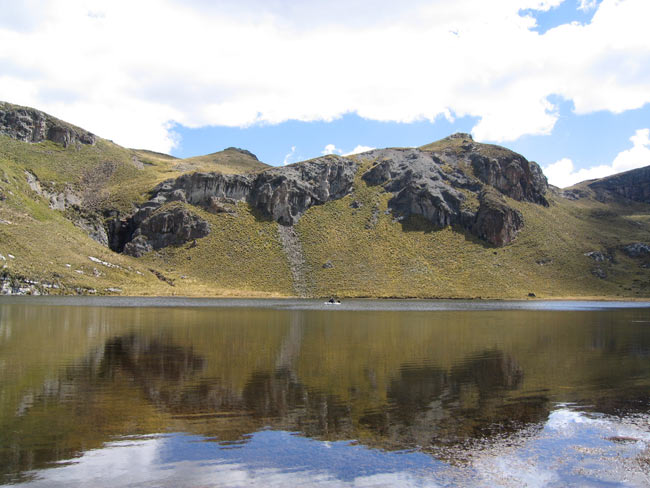Pre-Incan Metallurgy Discovered

Metals found in lake mud in the central Peruvian Andes have revealed the first evidence for pre-Colonial metalsmithing there.
These findings illustrate a way that archaeologists can recreate the past even when looters have destroyed the valuable artifacts that would ordinarily be relied upon to reveal historical secrets. For instance, the new research hints at a tax imposed on local villages by ancient Inca rulers to force a switch from production of copper to silver.
Pre-Colonial bronze artifacts have previously been found in the central Peruvian Andes dating back to about 1000 AD, after the fall of the Wari or Huari civilization , the largest empire in the Andes before the Incas . However, it has been unclear how metallurgy had developed there, or whether or not these artifacts even came from the Andes, instead perhaps coming from trading with coastal villages.
"There's a lot you can't tell about history from the metal artifacts here because there's been a lot of looting, during both modern times and when the Spanish first arrived to melt down what silver and other metals were there to send back to the Spanish crown," said researcher Colin Cooke, an environmental scientist at the University of Alberta in Canada. Curious emergence of metallurgy
To recreate a millennium of metallurgical history, the scientists measured the concentrations of copper, lead, zinc, antimony, bismuth, silver and titanium in sediments from Laguna Pirhuacocha , a lake in the mining region of Morococha in Peru that metal pollutants from furnace smoke contaminated. Collecting these samples over two summers in the extremely high, remote Andes was physically challenging, Cooke recalled, "with the occasional blown tire and truck getting stuck for a day."
The metals that Cooke, University of Pittsburgh environmental scientist Mark Abbott and their colleagues focused on are each linked with certain metallurgical practices. For instance, a large rise in zinc and copper levels relative to lead concentrations suggest copper smelting, while increases in lead, antimony and bismuth hint at silver metallurgy. They used carbon dating and lead isotope dating to figure out when the metals inside mud samples from the bottom of the lake were deposited.
The scientists found the earliest evidence for metallurgy dated back to between 1000 and 1200 AD, after the fall of the Wari but well before the rise of the Inca. Metallurgy then seemed aimed toward copper and copper alloys.
Get the world’s most fascinating discoveries delivered straight to your inbox.
"It's very curious. You normally associate metals and technological development with large states and empires," Cooke told LiveScience. "It's rather strange that the onset of metallurgy occurred just as the Wari Empire disappeared from the scene."
Transition to silver
The Wari collapsed at the same time as the Tiwanaku, another empire in the Andes, both due possibly to a massive drought that, among other things, dropped Lake Titicaca by 20 feet. "Ideas and technology concerning metallurgy might have spread after these collapses, but it's still a mystery of where metallurgy came from here," Cooke said.
After 1450 AD, the villages switched from copper to silver, according to findings to be detailed in the May 15 issue of the journal Environmental Science & Technology. The researchers noted this coincided with Inca control, when rulers imposed a tax, payable in silver. The precious metal had ceremonial status among the Inca.
"We're hoping to really help reconstruct the history of metallurgy in the New World," Cooke said. They have so far collected samples from some 30 other sites throughout the Andes that await further analysis, he added.
- Top 10 Ancient Capitals
- Ancient Pet Cemeteries Had Treats for Afterlife
- Ancient Wari Skull Mounted Like a Trophy

